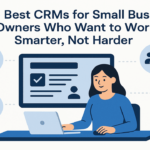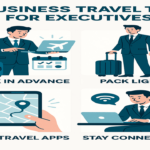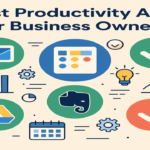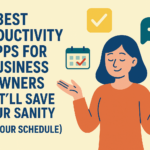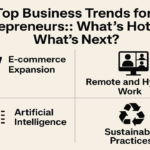With the fierce competition in the SaaS industry, you must find a way to set yourself apart from the crowd.
And one of the most effective ways is getting the right pricing model for your business.
But why?
Having a good pricing strategy for your business can help you:
- Drive more revenue for your business.
- Improve customer satisfaction.
- Gain an edge over your competition.
On the contrary?
Without a proper pricing model, you risk missing out on a lot of business opportunities. In fact, lack of a proper pricing strategy can lead to more customer churn.
Surprisingly, companies offering subscription billing model focus more on customer acquisition and less on their pricing models:
Besides, many companies tend to have the same pricing model even after scaling up.
It’s understandable. Pricing for SaaS products can be overwhelming and confusing given the plethora of pricing options B2B SaaS companies have to choose from out there.
The best ecommerce platforms and invoicing tools for small businesses have a mix of proving models for their users and their B2B users choose plans as per their requirements.
Granted, the best B2B SaaS pricing model involves a mix of several options.
Well, we’re here to help you.
In this article, we’ll discuss 6 popular B2B SaaS pricing models to help you create an effective pricing strategy for your business.
Let’s get started.
1. Usage-Based Pricing Model
Also known as Pay-As-You-Go the user-based pricing option charges users based on how much they use a product or service.
This means that the more customers use the product, the more they are charged or the higher the subscription they need, and vice versa.
This is a common pricing model for B2B SaaS companies since it enables scaling up or down based on the needs of their customers.
Customers can also downgrade their plans when their needs decrease.
Mailchimp, a B2B SaaS leader in email automation is a good example of a SaaS company that offers this pricing model:
Image via Mailchimp
Pros
- It can help to minimize customer churn.
- Can help to generate more revenue for your business.
- Can be a great fit for a wide range of customers with varying needs.
- Can encourage customers to try your product since they pay for what they use.
Cons
- Your growth depends on how much customers use your products or services.
- Not easy to predict revenue for your business.
2. Per-User Pricing Model
Most of the recurring billing platforms use this payment model.
The per-user pricing model is B2B’s SaaS staple.
Why?
Because companies are always looking to pay for products or services based on a known number of users or team members.
With this pricing strategy, the revenue increases based on the number of users of the product or service.
Besides, since each user is charged, it’s easier to predict revue, unlike the user-based pricing model.
GitLab, an open-source end-to-end software development company uses a Freemium + Per user pricing model:
Image via GitLab
Pros
- It’s a simple pricing model both for users and the business.
- Encourages users to adopt your product fast.
- Revenue increases with adoption.
- It’s easy to predict revenue growth.
Cons
- It’s easy for users to share a single login between multiple team members or users.
- It limits the adoption of your product which can increase customer churn.
3. Flat-Rate Pricing Model
Flat-rate is a straightforward subscription pricing model for B2B SaaS businesses where customers pay a fixed subscription fee for the service.
In this pricing plan, you charge users a single/flat price for a product with the same set of features. People can choose to pay monthly or annually without worrying about the number of users of the product.
Pros
- It’s a straightforward pricing model for SaaS businesses and customers.
- It enables accurate revenue prediction.
- It can help to attract new customers thanks to its simplicity.
Cons
- Lack of upselling opportunities.
- Scaling revenue can be difficult.
- Since it’s a one-size-fits-all pricing model, it might not work for all people.
4. Tiered Pricing Model
The tiered pricing model enables you to segment your prices to suit different customers with varying usage levels and needs.
Optimizing your pricing for different customers with varying needs can help you to attract a broader customer base.
Framer is a good example of a SaaS company that uses a tiered pricing strategy:
Image via Framer
Also, most of the popular ecommerce tools out there offer a tiered pricing model.
Pros
- It helps to increase profits and revenue.
- It can help to attract different customers with varying usage levels.
- It enables customers to choose a plan that suits their needs.
Cons
- The more pricing tiers you set up, the more it can be for customers to choose.
- Deciding on the right prices for each tier can be challenging.
5. Per-Feature Pricing Model
This pricing model uses a similar strategy to tiered pricing but instead of pricing based on customers’ usage levels, you charge based on features.
In this case, you create different packages with a list of features in each package. The more features customers need the more they pay.
Evernote uses a per-feature pricing model.
Pros
- The more customers upgrade to a higher package to enjoy more features the more revenue you get.
- Users pay only for the features they need.
- Enables you to offer resource-consuming features in a higher package.
Cons
- Determining what features to include in each package can be challenging.
6. Freemium Pricing Model
Freemium pricing is a powerful pricing strategy to attract customers where you offer a free version with limited features for a limited period.
The idea is to attract customers to your product to make them upgrade to a paid version to enjoy all the features of your product.
Dropbox, a cloud storage and file hosting service offers a traditional freemium pricing plan that enables users to sign up for free to get 2GB of storage.
Once a user’s storage needs go beyond 2GB, you have to upgrade to one of their paid plans.
MailChimp also uses a freemium pricing strategy as well
Pros
- It can help to reduce customer acquisition costs as people are more likely to try your product for free.
- It acts as your front door for letting your customers try out your product for free with the goal to hook them to a paid plan.
- It can help you attract a broader user base.
Cons
- Only a few free users upgrade to paid versions.
- Customers may doubt the value of the product.
Final Thoughts
For B2B SaaS companies, choosing the right pricing model is a continuous task.
No doubt, there are numerous B2B SaaS pricing models.
However, you need to find a pricing option that will help you generate enough revenue for your business without driving customers away.





